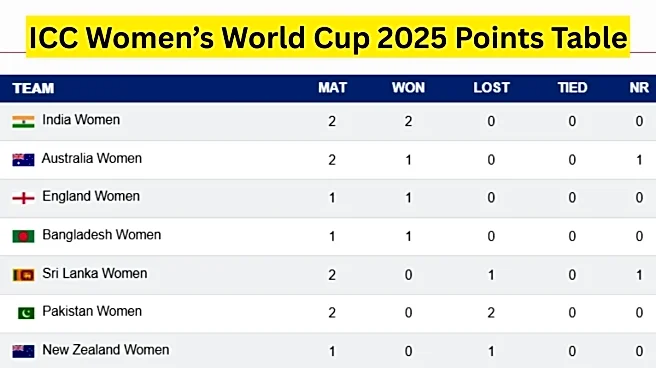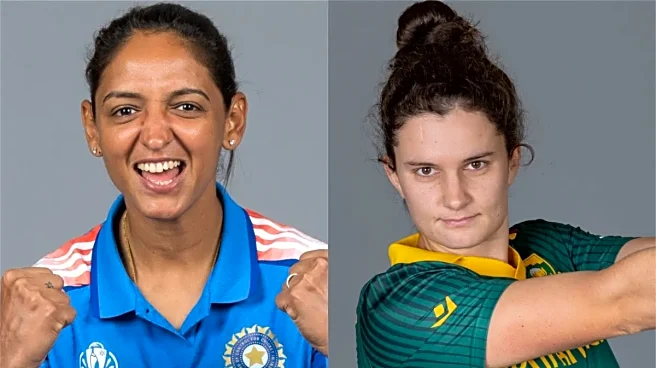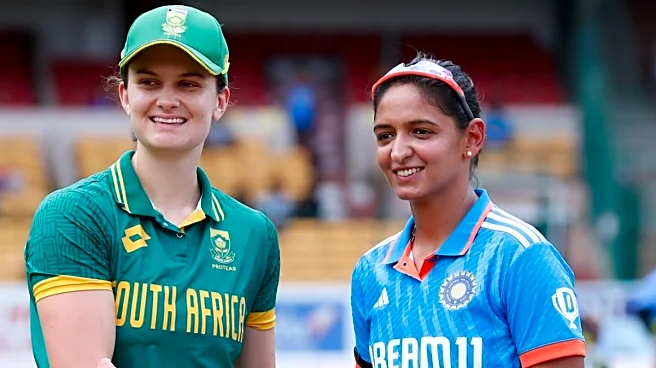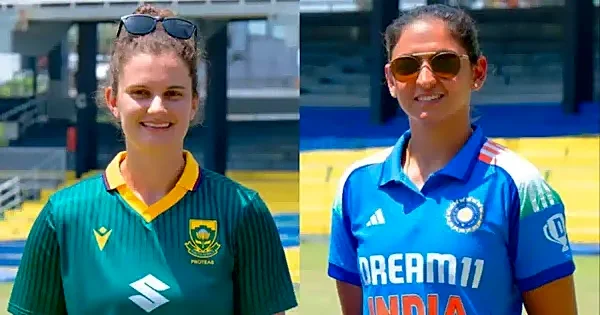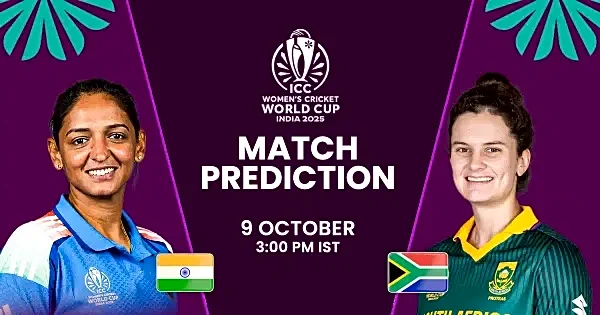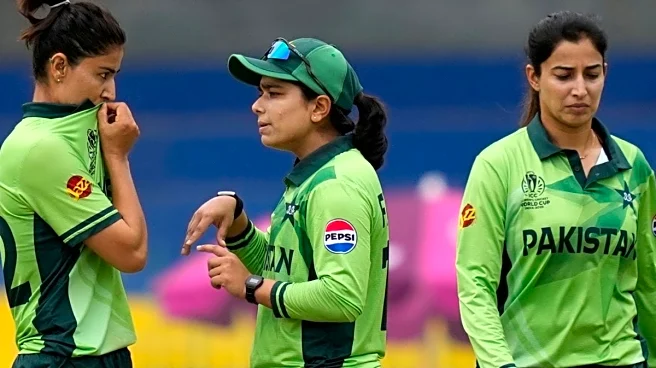India needs to be tactically flexible and consider adding a sixth bowling option against reigning champions Australia to stabilise their wavering Women’s World Cup campaign on Sunday.
The three-wicket defeat
against South Africa on Thursday revealed the limitations of sticking to a five-bowler strategy in all conditions.
Captain Harmanpreet Kaur resorted to her part-time off-spin in the absence of a sixth bowler, but once the Proteas targeted the pacers after the 40th over, the home side ran out of ideas.
Kranti Gaud and Amanjot Kaur conceded 30 runs in 12 balls across the 47th and 49th overs, allowing South Africa to successfully chase a 252-run target.
The current Indian bowling line-up includes two right-arm pacers (Gaud, Kaur), two off-spinners (Deepti Sharma, Sneh Rana), and a left-arm spinner (Sree Charani).
If the pitch at the ACA-VDCA stadium remains true, the strong Australian batting unit can easily challenge this rather unidimensional attack.
India will need a reliable sixth bowler to call upon in case of a crisis, as Harmanpreet’s part-time spin would be ineffective against a team like Australia, which boasts accomplished hitters like Ashleigh Gardner, Alyssa Healy, Ellyse Perry, and others.
However, selecting the sixth bowler is not straightforward.
India’s Bowling Reserve
The hosts might prefer to add an extra spinner if they decide to do so because Nadine de Klerk mentioned that South Africa had targeted Indian pacers, while spinners were able to get some purchase off the pitch in the last match here.
They have a left-arm spinner in the experienced Radha Yadav, who is also a reasonable lower-order batter.
One possibility is to bring her in place of Rana, but Australia has two left-handers in their line-up – Beth Mooney, who scored a century against Pakistan in their previous match, and opener Phoebe Litchfield.
Therefore, India might prefer to keep the off-spinners, who can take the ball away from the left-handers. India could consider bringing in pacer Arundhati Reddy, possibly for Amanjot, but this would compromise some late-order batting solidity, which has proven beneficial in this event.
India could also consider replacing Harleen Deol with Yadav, but this would weaken an already struggling top-order.
India’s Top-Order Concerns
Indian top-order batters’ struggles have become a recurring theme in this ODI showpiece. They were perilously close to a complete collapse against Sri Lanka and Pakistan before late-order batters stepped in to save the day.
This collapse became a reality against South Africa, and Australia, with their varied and skillful attack, will punish such lapses severely.
Significant contributions from Smriti Mandhana, Harmanpreet, and Jemimah Rodrigues are essential against the seven-time winners.
Mandhana, in particular, will need to elevate her game to the pre-World Cup level—a phase when she scored 928 runs from 14 innings at an average of 66.
Her poor performance at the top – 54 runs from three matches at an average of 18 – has severely affected the team in this tournament.
Nevertheless, there is a positive factor. Australia is one of her favorite opponents, with Mandhana amassing 916 runs at an average of 48.21 with four hundreds in ODIs.
India will be hoping that the elegant left-hander will rediscover her form to prevent slipping into a precarious situation ahead of equally challenging upcoming matches against England and New Zealand.
Full Squads
India: Harmanpreet Kaur (c), Smriti Mandhana (vc), Pratika Rawal, Harleen Deol, Jemimah Rodrigues, Richa Ghosh, Uma Chetry, Renuka Singh Thakur, Deepti Sharma, Sneh Rana, Sree Charani, Radha Yadav, Amanjot Kaur, Arundhati Reddy, Kranti Gaud.
Australia: Alyssa Healy (c), Darcie Brown, Ash Gardner, Kim Garth, Heather Graham, Alana King, Phoebe Litchfield, Tahlia McGrath, Sophie Molineux, Beth Mooney, Ellyse Perry, Megan Schutt, Annabel Sutherland, Georgia Voll, Georgia Wareham.



